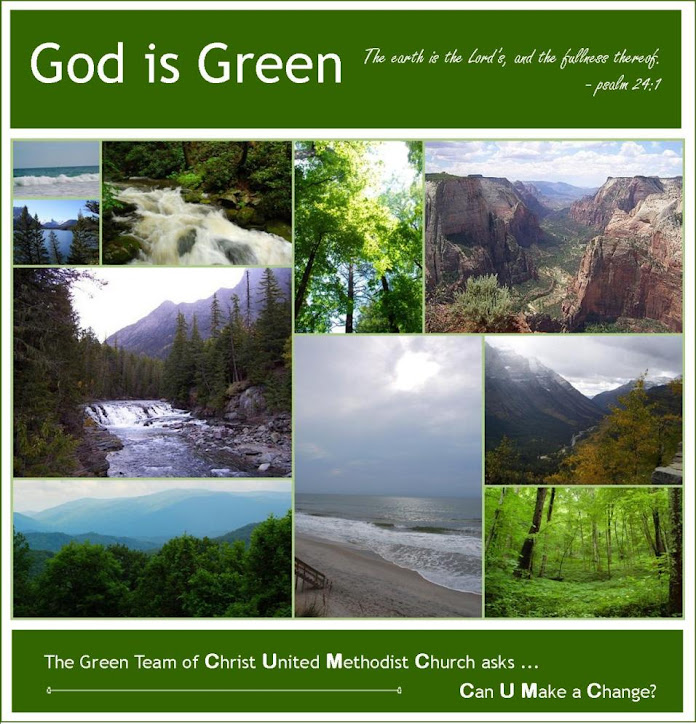This is the first in what we hope will become a frequent topic here on the CUMC Green Team blog - book reviews that deal with green topics. In this first review, Green Team member Keely Farris reviews Barbara Kingsolver's Animal, Vegetable, Miracle.
________________
Animal, Vegetable, Miracle: A Year of Food Life
by Barbara Kingsolver with Steven L. Hopp and Camille KingsolverThe New Oxford American Dictionary chose locavore, a person who seeks out locally produced food, as its word of the year in 2007. When I began this book I had just started to become aware of these locavores, people who eat food grown or produced locally or within a limited radius. The locavore movement encourages consumers to buy from farmers’ markets or even to produce their own food, with some arguing that fresh, local products are more nutritious and taste better. Locally grown food is an environmentally friendly means of obtaining food, since supermarkets that import their food use more fossil fuels and non-renewable resources.
The local foods movement is gaining momentum as many people prefer the taste and more environmentally sound effects of foods that are fresh, seasonal, and grown close to home. Some locavores draw inspiration from the The 100-Mile Diet or from advocates of local eating like Barbara Kingsolver, whose book Animal, Vegetable, Miracle chronicles her family's attempts to eat locally. Others just follow their taste buds to farmers' markets, community supported agriculture programs, and community gardens.
But you don't have to be a locavore to appreciate Kingsolver's memior. It is moving, informative, sincere - an honest potrait of a family who moved back to Southern Appalachia from Phoenix and committed to a one-year challenge of eating only what they could grow (they were "allowed" to buy only things that were produced within 100 miles of their home). Kingsolver takes readers through the seasons, sharing the joys and challenges of eating only foods that she, her husband, and two daughters grow in their backyard or purchase from neighboring farms. Part memoir, part cookbook, and part exposé of the American food industry, AVM is one family's inspiring story of discovering the truth behind the adage "you are what you eat" and a valuable resource for anyone looking to do the same.
While reading this memoir, written by such a gifted novelist as Kingsolver, it felt as if I were doing more than reading. It was more like drinking the words in, being invigorated by this descriptive story of the impact one family can make on this big world. Truly, I did not want this book to end. I enjoyed so much that I not only own a copy of it, I bought the audiobook too. It took me to mountains and Southern communities I remember as child, a landscape that is ever-changing and disappearing. Reading it was more of a treasured experience for me personally than just a pleasureable read.
Kingsolver allows you an intimate window into her family's year-long journey. It would be hard not to admire them and their committment as you follow them through the pages of the book. The Kingsolver-Hopp's are charming, funny, poetic, and informative all at the same time. This family is full concern for the farming community, and the book captures the pulse of a life that is dissolving like the misty haze that gives the Smoky Mountains their name. This one of my top picks and I suggest it to everyone who enjoys reading.
- Keely Farris
________________
If you have suggestions for other books you'd like to see reviewed here, please leave a comment in the "comments" section following this post. We'll do our best to accommodate you as soon as we can!






